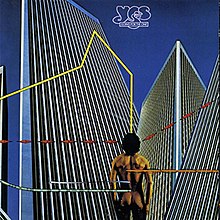"Sweet Dreams"
Sweet dreams can solve the future,
Sweet dreams provide the past.
Sweet things within your makeup;
These things will always last,
These things will make
Sweet dreams of conversation,
Sweet dreams of love affection.
Sweet words within your makeup;
Sweet words of things to
Come on and write your letter,
You know it will be better anyhow.
You're gonna laugh again,
You're gonna smile again,
You're gonna love again.
Sweet dreams are born inside you,
Sweet dreams are born to last.
Sweet thoughts within your makeup;
These thoughts will always last,
These thoughts will always last.
Come on and write your letter,
You know it will be better anyhow.
You're gonna laugh again,
You're gonna smile again,
You're gonna love again.
Sweet dreams can solve the future,
Sweet dreams provide the past.
Sweet dreams can solve the future,
Sweet dreams provide the past.
Sweet dreams provide the past.
Sweet things within your makeup;
These things will always last,
These things will make
Sweet dreams of conversation,
Sweet dreams of love affection.
Sweet words within your makeup;
Sweet words of things to
Come on and write your letter,
You know it will be better anyhow.
You're gonna laugh again,
You're gonna smile again,
You're gonna love again.
Sweet dreams are born inside you,
Sweet dreams are born to last.
Sweet thoughts within your makeup;
These thoughts will always last,
These thoughts will always last.
Come on and write your letter,
You know it will be better anyhow.
You're gonna laugh again,
You're gonna smile again,
You're gonna love again.
Sweet dreams can solve the future,
Sweet dreams provide the past.
Sweet dreams can solve the future,
Sweet dreams provide the past.
Time and a Word
From Wikipedia, the free encyclopedia
| Time and a Word | ||||
|---|---|---|---|---|
 | ||||
| Studio album by Yes | ||||
| Released | 24 July 1970 | |||
| Recorded | November 1969 – January 1970 atAdvision Studios, London, England | |||
| Genre | Progressive rock | |||
| Length | 40:06 | |||
| Label | Atlantic | |||
| Producer | Tony Colton | |||
| Yes chronology | ||||
| ||||
| Singles from Time and a Word | ||||
| ||||
| Alternative cover | ||||

US cover
| ||||
| Professional ratings | |
|---|---|
| Review scores | |
| Source | Rating |
| Allmusic | |
| Robert Christgau | C[2] |
| Sputnikmusic | |
Time and a Word is the second album by progressive rock band Yes, released in mid-1970 in the UK and November 1970 in the US. This was the last Yes album to feature the group's original line-up, as Peter Banks was fired before the album's release.
Time and a Word (Atlantic 2400 006) reached No. 45 in the UK.[4] The North American release of the album (Atlantic SD 8273) did not chart.
Contents
[hide]The album[edit]
Jon Anderson's decision to use a live orchestra on most of the album's songs (as he reported in the Yesyears video) put him very much at odds with Peter Banks. Tensions within the band increased, and just after the album's recording was completed in early 1970, Banks was asked to leave. Steve Howe would join the line-up that March, replacing Banks. The album includes two songs Anderson wrote with David Foster, a former bandmate in The Warriors.
Time and a Word's use of a studio orchestra seemed intrusive to some critics, and the album was received in a lukewarm fashion (UK No. 45, Yes' first chart entry at home). The opening track contains an orchestral intro to Richie Havens' song "No Opportunity Needed, No Experience Necessary", featuring a main theme from the 1958 film The Big Country by Jerome Moross. Also, the track "The Prophet" borrows from Gustav Holst's "Jupiter" from the Planets Suite.
The album was recorded at Advision Studios in West London.
Track listing[edit]
| Side one | ||||||||||
|---|---|---|---|---|---|---|---|---|---|---|
| No. | Title | Length | ||||||||
| 1. | "No Opportunity Necessary, No Experience Needed" (Richie Havens) | 4:48 | ||||||||
| 2. | "Then" (Jon Anderson) | 5:44 | ||||||||
| 3. | "Everydays" (Stephen Stills) | 6:08 | ||||||||
| 4. | "Sweet Dreams" (Anderson, David Foster) | 3:51 | ||||||||
| Side two | ||||||||||
|---|---|---|---|---|---|---|---|---|---|---|
| No. | Title | Length | ||||||||
| 5. | "The Prophet" (Anderson, Chris Squire) | 6:34 | ||||||||
| 6. | "Clear Days" (Anderson) | 2:06 | ||||||||
| 7. | "Astral Traveller" (Anderson) | 5:53 | ||||||||
| 8. | "Time and a Word" (Anderson, Foster) | 4:31 | ||||||||
| [show]2003 Remaster bonus tracks | ||||||||||
|---|---|---|---|---|---|---|---|---|---|---|
Tracks 9–11 first appeared on early West German pressing of Time and a Word, Atlantic/Teldec (GE) (24/4/70).
Album cover[edit]
The US and UK releases had different album artwork; the UK version used a black-and-white Dada-esque photo-montage of a nude woman with a butterfly, but this was deemed inappropriate in the US, so the cover there showed a picture of the band. Despite appearing on the US cover, Howe does not play on the album. The back cover of both versions features photographs of Anderson, Squire, Kaye, Bruford, and Banks.


